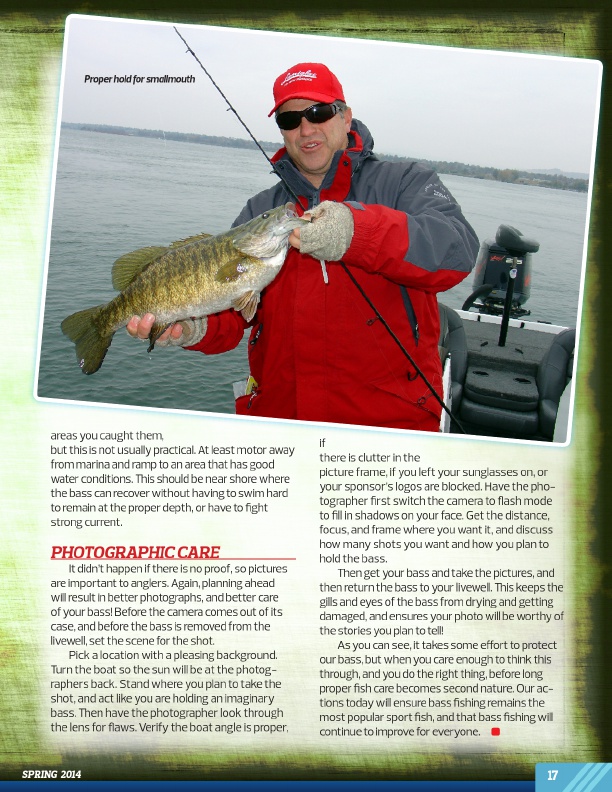
Proper hold for smallmouth
areas you caught them, but this is not usually practical. At least motor away from marina and ramp to an area that has good water conditions. This should be near shore where the bass can recover without having to swim hard to remain at the proper depth, or have to fight strong current.
PHOTOGRAPHIC CARE
It didn’t happen if there is no proof, so pictures are important to anglers. Again, planning ahead will result in better photographs, and better care of your bass! Before the camera comes out of its case, and before the bass is removed from the livewell, set the scene for the shot.
Pick a location with a pleasing background. Turn the boat so the sun will be at the photog- raphers back. Stand where you plan to take the shot, and act like you are holding an imaginary bass. Then have the photographer look through the lens for flaws. Verify the boat angle is proper,
if there is clutter in the picture frame, if you left your sunglasses on, or your sponsor’s logos are blocked. Have the pho- tographer first switch the camera to flash mode to fill in shadows on your face. Get the distance, focus, and frame where you want it, and discuss how many shots you want and how you plan to hold the bass.
Then get your bass and take the pictures, and then return the bass to your livewell. This keeps the gills and eyes of the bass from drying and getting damaged, and ensures your photo will be worthy of the stories you plan to tell!
As you can see, it takes some effort to protect our bass, but when you care enough to think this through, and you do the right thing, before long proper fish care becomes second nature. Our ac- tions today will ensure bass fishing remains the most popular sport fish, and that bass fishing will continue to improve for everyone.
SPRING 2014
17